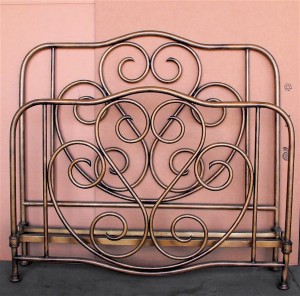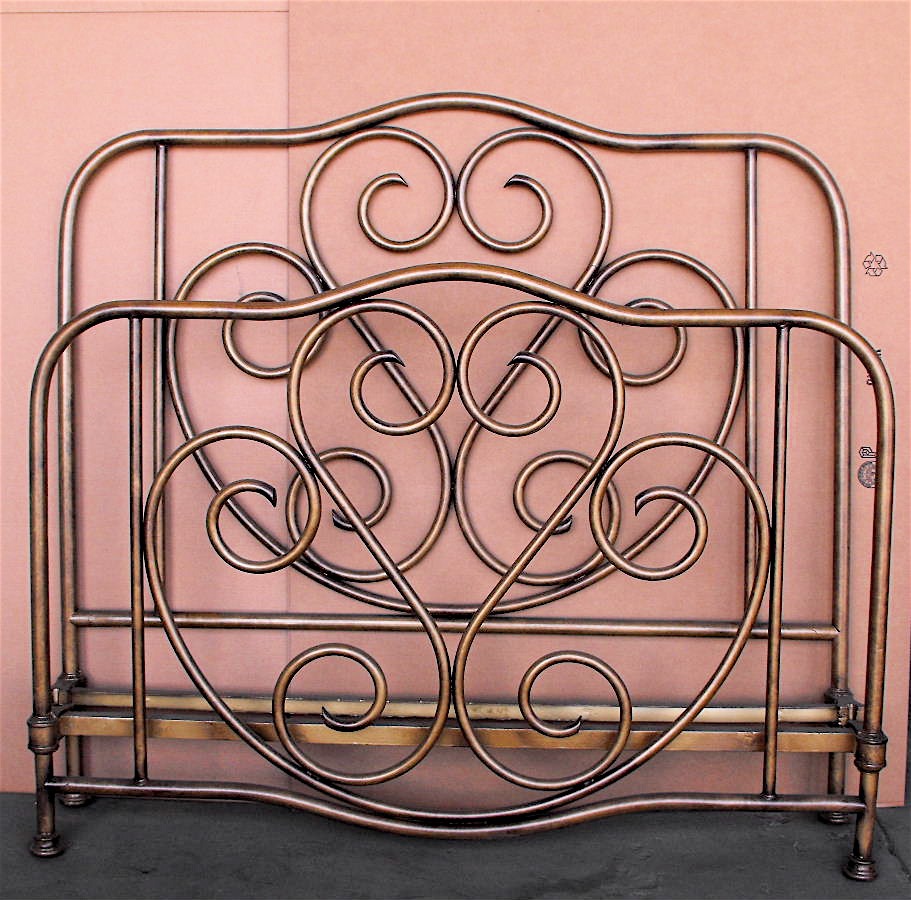In history, there was a definite “transition period” where the design of iron beds changed radically from the ornate, detailed castings, and scrolled Victorian lines…….. to a much more “stream-lined” less decorative.
Three of the more distinct “innovations” to help usher in the Industrial Revolution, and that were closely linked to it, were Textiles and cotton spinning and refining of cotton. A second thing was Steam Power…….for the first time in history people did not have to rely on human or animal muscle, wind or water for power. The steam engine was used to pump water from coal mines; to lift trucks of coal to the surface; to blow air into the furnaces for the making of iron; to grind clay for pottery; and to power new factories of all kinds. For over a hundred years the steam engine was the king of the industries. And the third thing was Iron Making……In the Iron industry, coke was finally applied to all stages of iron smelting, replacing charcoal. This had been achieved much earlier for lead and copper as well as for producing pig iron in a blast furnace, but the second stage in the production of bar iron depended on the use of potting and stamping (for which a patent expired in 1786) or puddling (patented by Henry Cort in 1783 and 1784).
These represent three ‘leading sectors’, in which there were key innovations, which allowed the economic take off by which the Industrial Revolution is usually defined. This is not to belittle many other inventions, particularly in the textile industry. Without some earlier ones, such as the spinning jenny and flying shuttle in the textile industry and the smelting of pig iron with coke, these achievements might have been impossible. Later inventions such as the power loom and Richard Trevithick’s high pressure steam engine were also important in the growing industrialisation of Britain. The application of steam engines to powering cotton mills and ironworks enabled these to be built in places that were most convenient because other resources were available, rather than where there was water to power a watermill.
Iron beds were but one of many things that tried, in vain , to make the transition forward into the future of industrialization. Small independently owned foundries, wanting to keep up with the style and trends of the day, were forced to start eliminating those design ideas that were tied to the past. Everyone wanted to be a part of the push toward a more modern society. It was felt that beds either hitched their wagon to the forward moving design trends or they would be left in the past….as would be the foundries and manufacturers that produced them.
The bed in this blog is from that period were beds eliminated castings completely, yet wanted to maintain a certain degree of romanticism with the bold scrolling curves. This is actually the only bed of this period and design that I’ve ever seen. Which leads me to believe it was a very short lived design period or……. not that many foundries even tried to make the transition.
I hope you’ve found this blog informative . I invite you to revisit my website
to answer any and all questions you might have about antique iron beds.
I also invite you to take a look at our company Face Book page for multiple photo albums on Custom Finishes, Canopy Conversions and a comprehensive “Before & After” King Conversions album.







